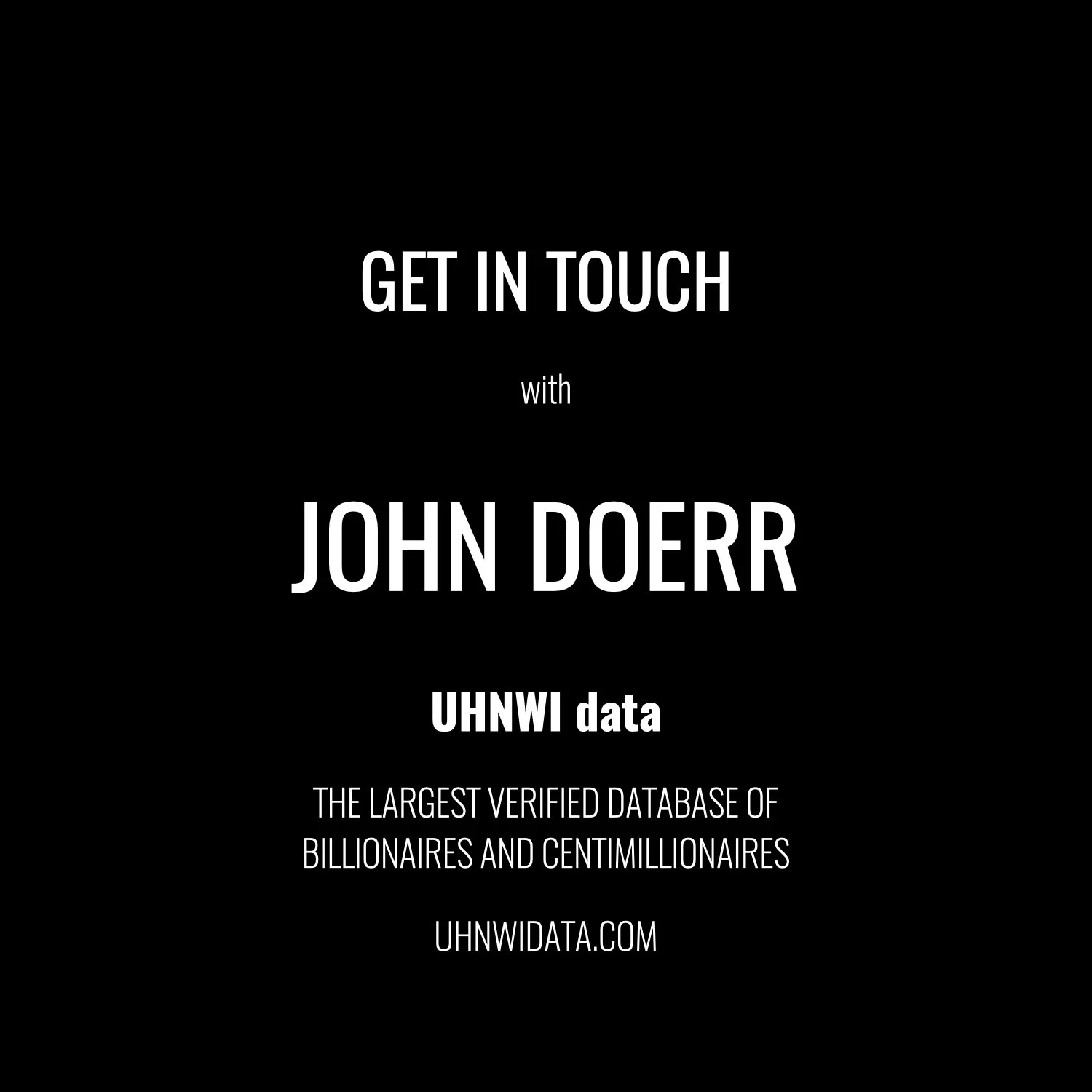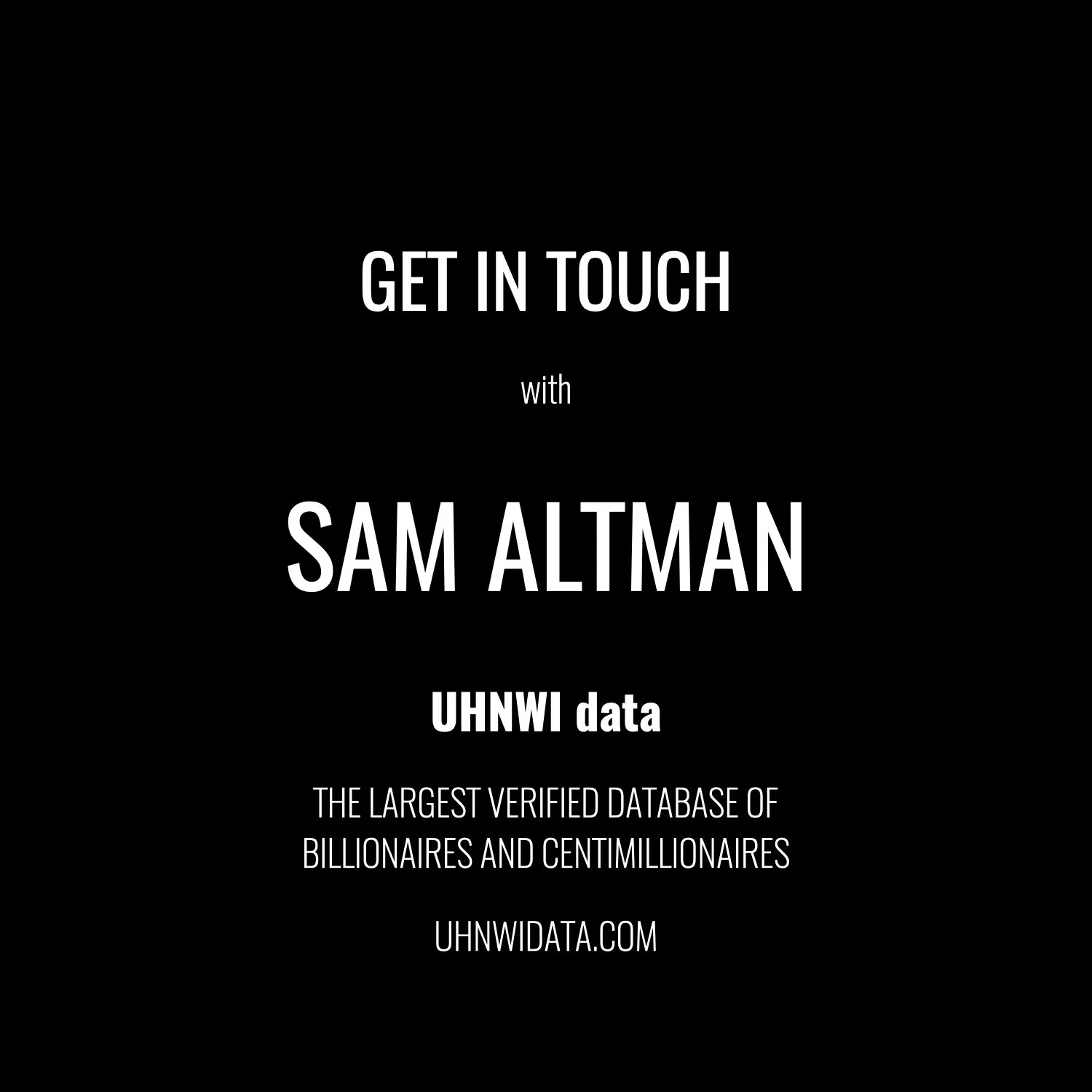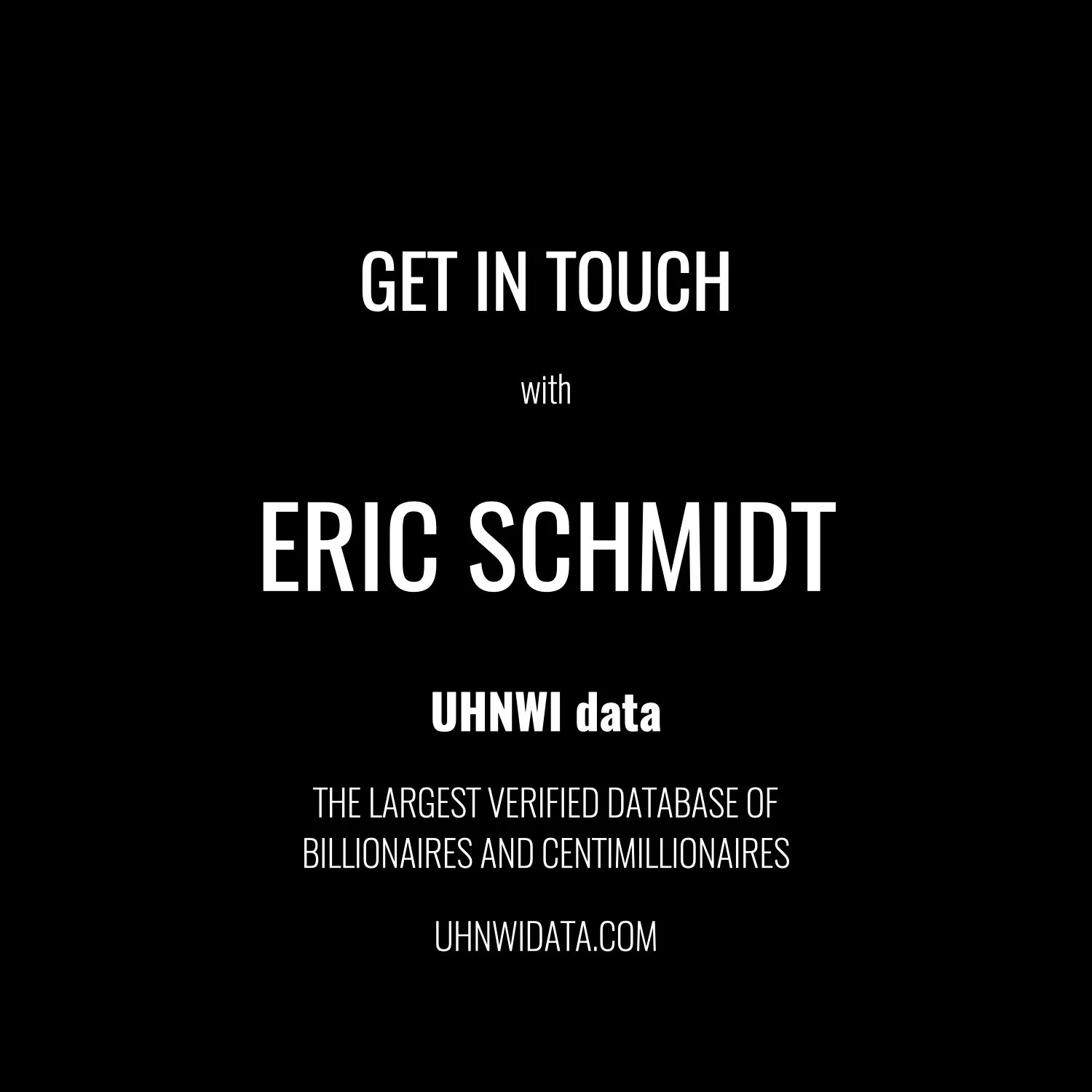John Doerr is an American engineer, venture capitalist, and author best known as the chairman of Kleiner Perkins, where he has driven investments in foundational internet companies including Amazon, Google, and Netscape.[1][2] Born in St. Louis, Missouri, Doerr studied electrical engineering at Rice University and earned an MBA from Harvard Business School in 1976, subsequently working at Intel before cofounding startups and joining Kleiner Perkins in 1980.[3][1] His early backing of browser innovator Netscape catalyzed the commercial web, while stakes in e-commerce leader Amazon and search engine Google generated billions in returns, cementing his influence in Silicon Valley's growth.[4][5] Doerr popularized the Objectives and Key Results (OKR) management system—adapted from Intel—in his 2018 bestseller Measure What Matters, which he credits for scaling successes at Google and beyond.[6] Later shifting toward climate initiatives, he authored Speed & Scale in 2021 to promote aggressive net-zero strategies, though Kleiner Perkins' cleantech portfolio has incurred notable losses amid sector-wide hurdles.[7][8] With an estimated net worth of $13.8 billion as of 2025, Doerr remains active in funding disruptive technologies despite regrets over passes like Tesla.[9][10]
Early Life and Education
Family Background and Upbringing
John Doerr was born on June 29, 1951, in St. Louis, Missouri, as one of five children in a middle-class family.[11][12] His father worked in manufacturing, providing a stable but unremarkable household environment during his formative years.[13]
Doerr attended Chaminade College Preparatory School, a private Catholic institution in St. Louis, where he completed his secondary education before pursuing higher studies.[14][15] Limited public details exist regarding specific family dynamics or influences from his upbringing, reflecting the relatively private nature of his early personal life.
Academic Achievements
Doerr earned a Bachelor of Science degree in electrical engineering from Rice University, followed by a Master of Science degree in electrical engineering and computer science from the same institution.[16][17] These degrees provided a technical foundation in semiconductor design and computing, areas central to his subsequent career in technology development.[1]
He then obtained a Master of Business Administration from Harvard Business School in 1976, which equipped him with expertise in management and finance applicable to high-growth enterprises.[1][17] No specific academic honors or awards from his student years are documented in primary biographical accounts, though his rigorous engineering training at Rice emphasized practical innovation in electrical systems.[18]
Early Professional Career
Role at Intel
John Doerr joined Intel Corporation in 1974, immediately following the company's release of the 8080 8-bit microprocessor, which marked a pivotal advancement in personal computing hardware.[19] Initially employed in sales and marketing roles, Doerr contributed to promoting Intel's early microprocessor products during a period of rapid industry growth.[20]
Over his six-year tenure at Intel, ending in 1980, Doerr advanced through various positions encompassing engineering, marketing, management, and sales responsibilities.[18] He served as an engineer and marketing manager focused on microcomputers, helping to drive adoption of Intel's processors in emerging applications.[21] Doerr's performance in sales distinguished him, earning recognition as one of Intel's top-ranked sales executives.[19]
During this time, Doerr was exposed to rigorous management practices under Intel's leadership, including those pioneered by CEO Andy Grove, which emphasized operational discipline and goal-setting frameworks that later influenced his venture capital approach.[22] His work at Intel provided foundational experience in semiconductor sales and the dynamics of high-tech product commercialization, amid competition from firms like Motorola.[21]
Founding of Silicon Compilers
In 1981, L. John Doerr co-founded Silicon Compilers Inc. (SCI), a developer of very-large-scale integration (VLSI) computer-aided design (CAD) software, alongside Caltech professor Carver Mead, David Johannsen, Edmund K. Cheng, and Peter Rip.[23][24] The company pioneered silicon compilation technology, enabling automated design and layout of complex integrated circuits from high-level behavioral descriptions, building on Mead's earlier work in scalable VLSI methodologies.[25] Doerr served as the founding CEO, initially committing full-time for approximately nine months before dividing his efforts between SCI and his role at Kleiner Perkins Caufield & Byers (KPCB), where he had joined as a partner in 1980 specifically to secure venture funding for the startup.[26][27]
SCI received early backing from KPCB, reflecting Doerr's strategy of leveraging his Intel experience in memory chip design and marketing to bridge hardware engineering with emerging software tools for chip automation.[24] The firm's GENESIL system, introduced in 1984, targeted systems engineers lacking deep semiconductor expertise, allowing circuit design and analysis through compiled silicon layouts, which accelerated prototyping for applications like early Ethernet chips.[28][29] Doerr held a minority equity stake and managed operations part-time for about two years, viewing the venture as an extension of his Intel-honed focus on scalable semiconductor innovation amid the early 1980s boom in CAD tools.[24]
The founding aligned with broader shifts in Silicon Valley toward design automation, as manual VLSI layout proved labor-intensive; SCI's approach aimed to democratize chip design by treating silicon as a programmable medium akin to software compilation.[25] Headquartered in San Jose, California, the company operated as a private entity, emphasizing tools that reduced design cycles from months to weeks for gate arrays and standard cells.[30] Doerr's leadership in the startup phase underscored his transition from corporate engineering to entrepreneurial investment, though he later prioritized venture capital amid SCI's challenges in scaling against competitors like Mentor Graphics.[24]
Venture Capital Career
Entry into Kleiner Perkins
In 1980, John Doerr transitioned from Intel Corporation to Kleiner Perkins Caufield & Byers, a prominent Silicon Valley venture capital firm founded in 1972 by Eugene Kleiner and Tom Perkins.[1][18] Doerr had spent the prior six years at Intel, starting in 1974 in roles spanning engineering, marketing, and sales, where he rose to become a top-ranked sales executive amid the company's shift from memory chips to microprocessors.[31][32]
The move to venture capital came via a direct outreach from Intel colleague Bob Taylor, who alerted Doerr to Kleiner Perkins' search for a young engineer with industry insight to join as an investor; Doerr, initially unfamiliar with the field, viewed it as an intriguing opportunity to support emerging startups akin to his entrepreneurial aspirations.[26] This recruitment leveraged Doerr's practical experience in high-tech sales and semiconductors, aligning with Kleiner Perkins' focus on backing hardware and software innovators during the nascent personal computing era.[33]
Upon arrival, Doerr assumed a partner role, emphasizing deal sourcing in technology sectors and applying operational knowledge from Intel to evaluate founders and prototypes.[34] His entry marked an infusion of hands-on engineering perspective into the firm, contrasting with more traditional financial backgrounds among some partners, and positioned him to champion early-stage bets on scalable tech ventures.[35]
Leadership as Chairman
In March 2016, John Doerr stepped down from his operational leadership role at Kleiner Perkins Caufield & Byers to become the firm's first chairman, with Ted Schlein assuming the managing general partner position.[36] [37] This transition, announced on March 31, 2016, reflected Doerr's shift toward mentoring and strategic oversight after 36 years at the firm, prioritizing the recruitment and coaching of emerging partners over active fund management or deal sourcing.[38] [34]
As chairman, Doerr's responsibilities emphasized long-term firm governance and talent development, drawing on his experience from early investments in companies like Google and Amazon.[7] He continued to advise portfolio companies and serve on boards, including those of Slack and DoorDash, while reducing involvement in new venture funds to focus on institutional evolution amid Kleiner Perkins' pivot toward later-stage investments and growth equity.[36] This role aligned with broader industry trends where veteran partners transition to advisory capacities to sustain firm culture and expertise transfer, though specific metrics on recruitment outcomes under his chairmanship remain undisclosed in public records.[39]
Doerr retained his title as chairman through at least 2023, as evidenced by firm biographies and external profiles, during which Kleiner Perkins navigated challenges including a reported decline in early-stage deal flow and returns compared to its 1990s-2000s peak.[7] [1] His leadership in this capacity supported the firm's rebranding to Kleiner Perkins in 2016 and emphasis on sectors like climate tech, though critics have noted limited transparency on performance attribution to his oversight.[33] No major controversies or exits directly tied to his chairmanship have been documented in primary sources.
Key Investment Successes
Doerr played a pivotal role in Kleiner Perkins' early investment in Netscape Communications in 1994, committing $5 million for approximately 25% of the company; this stake yielded returns exceeding $400 million following Netscape's initial public offering in 1995, capitalizing on the burgeoning commercial internet browser market.[33]
In 1996, Doerr facilitated Kleiner Perkins' introduction to Amazon through connections including Bill Campbell, leading to an $8 million investment that appreciated to around $60 million upon Amazon's IPO in May 1997, establishing a foundational stake in the emerging e-commerce sector.[40][41]
Doerr led Kleiner Perkins' landmark $12.5 million investment in Google in 1999, securing roughly 12% ownership in the search engine startup founded by Larry Page and Sergey Brin; this early backing propelled the firm's returns as Google evolved into Alphabet Inc., with the initial stake's value ballooning into billions amid the company's dominance in digital advertising and technology services.[42][43]
Other notable successes under Doerr's influence include early investments in Sun Microsystems and Intuit, contributing to Kleiner Perkins' track record of backing infrastructure and software firms that scaled during the 1980s and 1990s computing boom.[4][44]
Investment Philosophy and Returns
Doerr's investment philosophy emphasizes supporting founders who pursue audacious, transformative goals with a focus on technical excellence, customer obsession, and scalable innovations rather than direct competition.[7] He prioritizes avoiding conflicts of interest, adhering to the principle that investments should align without divided loyalties, enabling full commitment to portfolio companies' success.[24] This approach targets entrepreneurs with exceptional ambition and a relentless drive for knowledge, who tackle seemingly impossible challenges in high-inflection technologies.[5] Doerr's strategy also incorporates rigorous execution frameworks, such as setting ambitious objectives with measurable key results, to ensure alignment and rapid scaling in early-stage ventures.
Kleiner Perkins, under Doerr's leadership, generated average annualized returns exceeding 30 percent from its inception in 1972 through the late 1990s, ranking in the top 1 percent of venture capital firms based on historical performance data.[24] Key investments spearheaded by Doerr exemplified this success, including a $12 million stake acquiring approximately 12 percent of Google in June 1999, which yielded multibillion-dollar returns after the company's August 2004 IPO and subsequent growth.[43] Earlier wins, such as in Netscape (initial public offering in 1995) and Amazon (early rounds starting 1996), further demonstrated the power-law returns typical of his portfolio, where outlier successes offset numerous smaller outcomes.[24]
However, Doerr's pivot toward cleantech investments from 2006, aligning with his philosophy of backing disruptive environmental technologies, produced mixed results, with dedicated funds underperforming broader market benchmarks due to execution challenges and market timing issues.[8] For instance, Kleiner's green growth fund achieved 2.4 times multiple on invested capital as of late 2018, considered strong within the category but lagging top tech-focused returns.[33] Overall firm performance declined in the 2010s amid this shift, highlighting risks when applying high-conviction strategies to nascent sectors with high capital intensity and policy dependencies.[33]
Management Innovations
Introduction of OKRs
John Doerr first encountered the Objectives and Key Results (OKRs) framework during his tenure at Intel Corporation, where he joined as a salesperson in 1974 and attended a training course led by CEO Andy Grove in 1975. Grove had adapted Peter Drucker's Management by Objectives (MBO) concept into OKRs to foster alignment, focus, and measurable progress amid Intel's competitive pressures, such as the "Operation Crush" campaign in the late 1970s that aimed to capture 70% market share in microprocessor sales against rivals like Motorola. Doerr, who rose to sales roles at Intel until 1980, credited this exposure with shaping his advocacy for the system, describing it as a tool for "structured goal setting" that emphasized ambitious objectives paired with quantifiable key results.[45][46]
After leaving Intel to join Kleiner Perkins Caufield & Byers in 1980, Doerr applied OKRs in early investments but gained prominence for introducing the framework to Google in late 1999, shortly after Kleiner Perkins led a $12.5 million investment round in the then-startup. As a board member and advisor, Doerr presented OKRs to founders Larry Page and Sergey Brin during a meeting, framing it as a "gift" to manage the company's rapid scaling and innovation needs, with objectives defined as inspirational goals and key results as specific, verifiable metrics typically scored from 0 to 1.0. Google's leadership adopted OKRs experimentally over the next quarters, starting company-wide in early 2000, which Doerr later detailed as enabling alignment across teams without rigid enforcement, contrasting with more hierarchical systems.[47][48]
Doerr's introduction extended OKRs' influence beyond Google, as he evangelized the method to other portfolio companies and leaders, including Bono for ONE Campaign and the Gates Foundation, emphasizing its role in driving "10x growth" through stretch goals over incremental targets. In his 2018 book Measure What Matters, Doerr codified OKRs' principles, drawing on Intel's origins and Google's implementation to argue for their superiority in dynamic environments, supported by case studies showing adoption led to outcomes like Google's early product launches. While OKRs drew from established ideas like MBO, Doerr's promotion highlighted their causal efficacy in high-stakes tech contexts, though critics note potential overemphasis on quantification can sideline qualitative judgment.[6][49]
Influence on Tech Companies
Doerr exerted substantial influence on tech companies' management practices by championing the adoption of Objectives and Key Results (OKRs), a goal-setting framework he first encountered at Intel under Andy Grove in the 1970s. In the fall of 1999, as a partner at Kleiner Perkins Caufield & Byers, Doerr introduced OKRs to Google co-founders Larry Page and Sergey Brin during an investment pitch meeting in Mountain View, California, when the company had approximately 40 employees. Google promptly tested and implemented OKRs over the following quarters, applying them to foster alignment, prioritize ambitious targets, and measure progress amid hypergrowth; for instance, an early company-wide objective targeted 10,000 daily search queries, which helped propel the search engine's expansion.[47][50]
Google's sustained use of OKRs as it scaled to over 190,000 employees by 2018 demonstrated the framework's efficacy in dynamic tech environments, establishing it as a benchmark for operational discipline and innovation. This success inspired widespread emulation; by the mid-2010s, firms including LinkedIn, which Doerr also backed via Kleiner Perkins, Airbnb, Dropbox, Spotify, and Uber had integrated OKRs to enhance strategic focus and cross-team coordination, often citing Google's implementation—directly traceable to Doerr's 1999 intervention—as a foundational influence. Doerr reinforced this diffusion through his 2018 book Measure What Matters, which presented OKR case studies from Google and other entities, accelerating adoption beyond Silicon Valley.[51][52][53]
The framework's proliferation reflects Doerr's role in bridging Intel's rigorous metrics with startup agility, though its impact varies by execution; critics note that without Google's resources, OKRs can strain smaller teams if not adapted judiciously, yet empirical outcomes at adopters like Adobe—where quarterly OKRs aligned product roadmaps—underscore measurable gains in velocity and accountability. Doerr's advocacy, including public talks and board oversight at Google, positioned OKRs as a counter to vague hierarchies, influencing an estimated 50% of Fortune 500 tech firms by the early 2020s.[48][54]
Climate Change Advocacy
Shift to Green Investments
In early 2006, John Doerr began advocating for a major pivot toward clean technology investments at Kleiner Perkins, motivated by a combination of personal conviction and perceived market potential. Influenced by Al Gore's climate change presentations, including a private screening of the slide deck that became An Inconvenient Truth, and spurred by discussions with his daughter Mary, Doerr viewed cleantech as essential for addressing global energy challenges and achieving U.S. energy independence.[55][8] At a Churchill Club event that year, he proclaimed "Green is the new red, white and blue," framing the shift as both an environmental imperative and a trillion-dollar business opportunity comparable to the internet boom.[8]
This personal commitment translated into firm-wide action, with Kleiner Perkins allocating $100 million from its latest fund to greentech startups in 2006, a commitment that was subsequently doubled to $200 million.[8] Doerr positioned the firm as a pioneer in Silicon Valley's cleantech movement, targeting sectors such as solar, wind, geothermal, energy efficiency, and renewable fuels. By 2008, Kleiner Perkins launched a dedicated $500 million Green Growth Fund to accelerate investments in these areas, building on an initial wave that saw over $1 billion committed across approximately 70 clean energy initiatives by the late 2000s.[56][8] This represented a strategic reorientation from traditional information technology toward hardware-intensive and capital-heavy ventures aimed at zero-emission technologies.[7]
Doerr's advocacy extended to public forums, including a 2007 TED conference talk where he outlined the scale of the climate investment opportunity, estimating needs in the trillions to transition global energy systems.[57] He argued that venture capital's model of backing disruptive innovation could replicate past successes in computing and biotech, applying it to solve what he described as the "hardest problem" of engineering abundant, cheap clean energy.[58] This shift marked Kleiner Perkins' entry into what became known as Clean Tech 1.0, a broader VC trend that saw North American cleantech funding rise from $1.6 billion in 2005 to over $4 billion by 2008.[2][59]
Outcomes and Financial Performance
Kleiner Perkins, guided by Doerr's advocacy for green technology, committed around $1 billion to clean tech ventures from 2007 to 2010, focusing on areas like solar, biofuels, and energy efficiency.[60] By May 2022, Doerr reported these holdings valued at approximately $3 billion, yielding a roughly threefold return despite early setbacks.[60] This appreciation stemmed from survivors like certain battery and renewable firms, though the firm missed major winners such as Tesla.[56]
The portfolio's outcomes reflected broader clean tech sector volatility, with a 2000s boom followed by a bust around 2010-2012, exacerbated by high upfront capital needs, technological hurdles, regulatory uncertainties, and subsidized fossil fuel competition.[57] [59] Notable failures included investments in solar startups like Solyndra, which collapsed amid manufacturing inefficiencies and Chinese oversupply, contributing to Kleiner's overall clean tech returns lagging behind its consumer internet successes during the same period.[59] Doerr conceded in 2021 that many climate bets "failed" and progressed slower than mobile investments, attributing delays to the sector's capital-intensive nature and external market pressures.[61]
Doerr's Speed & Scale (2021) framework emphasized scaling "moonshot" climate solutions, such as electrifying transport and decarbonizing grids, with associated investments through Kleiner and his networks.[55] While the book's tracker monitors global progress toward net-zero by 2050—reporting mixed advancements, like electric vehicle adoption gains offset by industrial emissions shortfalls—financial returns on these targeted areas remain uneven, with climate VC funding declining 34% from 2022 to 2024 amid high interest rates and execution risks.[62] [63] Kleiner has persisted, launching later funds like KP Select III in 2023 for high-conviction climate plays, but aggregate returns data for post-2010 green portfolios is not publicly disclosed, underscoring VC opacity and the sector's long gestation periods.[64]
Book: Speed & Scale
Speed & Scale: An Action Plan for Solving Our Climate Crisis Now is a 2021 book by venture capitalist John Doerr, co-authored with policy expert Ryan Panchadsaram, published on October 28 by Portfolio, an imprint of Penguin Random House.[65][66] The work applies the Objectives and Key Results (OKR) management framework, which Doerr popularized through investments in companies like Google, to formulate a global strategy for addressing anthropogenic climate change.[67] The central thesis posits that achieving net-zero greenhouse gas emissions—reducing annual emissions from 59 gigatons of CO2-equivalent in 2020 to zero by 2050—requires measurable, time-bound targets across sectors, with half the reductions targeted by 2030 to stay within the global carbon budget of approximately 400 gigatons.[68][67]
The book outlines ten principal objectives structured as OKRs, including electrifying transportation to phase out fossil fuel vehicles, decarbonizing the electric grid through renewable integration and storage, decarbonizing industrial processes like steel and cement production (which account for significant emissions), developing sustainable agriculture to feed a projected 10 billion people, halting deforestation and restoring ecosystems, and deploying carbon removal technologies to sequester residual emissions such as 5 billion tons of CO2 annually via direct air capture or enhanced weathering.[67][69] These are supported by four accelerators: policy reforms to enable deployment, mobilizing collective action, fostering innovation in low-carbon technologies, and directing investment toward scalable solutions.[67] Doerr draws on data from sources like the International Energy Agency and consultations with experts, emphasizing empirical tracking via an online dashboard at speedandscale.com to monitor progress against key results.[69]
Reception has been generally positive among business and environmental leaders, with endorsements from figures like Bill Gates and Al Gore highlighting its pragmatic, metric-driven approach over ideological debates.[70] The book has a 4.2 average rating on Goodreads from over 1,500 reviews, praised for translating complex climate science into actionable steps, though some critiques note an overreliance on technological optimism without sufficient address of geopolitical or economic barriers to implementation.[68] It builds on Doerr's prior advocacy for green investments at Kleiner Perkins, positioning OKRs as a tool to align governments, corporations, and investors toward emission reductions.[71]
Political Engagement
Obama Administration Role
In February 2009, President Barack Obama appointed John Doerr, then a partner at Kleiner Perkins Caufield & Byers, to the President's Economic Recovery Advisory Board (PERAB), an external panel tasked with providing independent advice on strategies to address the ongoing financial crisis and stimulate economic recovery.[72][73] The board, chaired by former Federal Reserve Chairman Paul Volcker, included business leaders and economists who briefed the president, vice president, and economic team on fiscal policy, job creation, and innovation-driven growth; Doerr participated in meetings discussing topics such as manufacturing competitiveness and technology investment.[31][74]
Doerr's involvement extended into 2011 when the PERAB transitioned into the President's Council on Jobs and Competitiveness, where he continued serving as a member focused on enhancing U.S. economic competitiveness through technological advancement and entrepreneurial ecosystems.[75] In this capacity, he advocated for policies supporting innovation in sectors like clean energy and digital infrastructure, aligning with his venture capital expertise, though the council's recommendations emphasized broad-based job growth over sector-specific subsidies.[76] The council held regular sessions until its dissolution in early 2012 amid shifting administration priorities.[75]
Campaign Contributions
John Doerr has directed the majority of his political contributions to Democratic candidates, party committees, and aligned PACs, with federal donations exceeding $8 million since 1982 according to Federal Election Commission records.[77] These funds have supported a range of recipients, including presidential campaigns, congressional leadership PACs, and super PACs focused on Democratic priorities such as environmental policy and campaign finance reform. Doerr's giving reflects a consistent alignment with progressive causes, though he has occasionally backed bipartisan efforts like the Mayday PAC, which aimed to reduce money's influence in politics.[77]
A notable aspect of Doerr's involvement includes bundling activities, where he facilitated large sums from Silicon Valley networks for Democratic campaigns. He hosted a 2011 dinner fundraiser for President Barack Obama's reelection effort and a 2014 event for the Democratic Senatorial Campaign Committee, leveraging his venture capital connections to amplify contributions beyond his personal donations.[77][78]
Key federal contributions include substantial support for recent Democratic presidential bids:
Recipient Amount Year Type
Joe Biden Campaign $420,000 2024 Direct
Joe Biden Campaign $358,000 2020 Direct
Senate Majority PAC $750,000 2014 Super PAC (Democratic Senate support)
Priorities USA Action $500,000 2016 Super PAC (pro-Clinton, anti-Trump)
PAC Supporting Hakeem Jeffries $300,000+ 2024 Leadership PAC
PAC Supporting Nancy Pelosi $261,000 2022 Leadership PAC
Mayday PAC $250,000 2014 Bipartisan reform super PAC
In 2023 alone, Doerr contributed $1,199,315 to various federal candidates and PACs.[77] His donations to individual congressional candidates, such as $8,700 to Josh Harder's campaign in June (year unspecified in records but recent), $5,800 to Zoe Lofgren in March, and $2,800 to Anna Eshoo from July to December, further illustrate targeted support for California Democrats.[79][80][81] Recent party-level gifts include $10,000 to the Democratic Party of Pennsylvania on November 1, 2024, and similar amounts to state Democratic parties like Nevada.[82] No significant contributions to Republican entities appear in public records, underscoring a partisan focus.[77]
Policy Advocacy and Lobbying
Doerr has actively advocated for policies promoting clean energy innovation and carbon pricing mechanisms. In January 2009, he testified before the U.S. Senate Committee on Environment and Public Works, urging federal investment in green technologies as a strategy for economic recovery amid the financial crisis, emphasizing venture capital's role in scaling renewable energy solutions like solar and biofuels.[83] He highlighted the potential for job creation and energy independence, projecting that clean tech could generate millions of jobs by leveraging private investment alongside government incentives.[84]
Throughout the late 2000s, Doerr supported cap-and-trade legislation to establish a market-based price on carbon emissions, viewing it as essential for driving innovation in low-carbon technologies. His advocacy aligned with efforts to pass the American Clean Energy and Security Act (Waxman-Markey bill) in 2009, which aimed to cap greenhouse gas emissions and auction allowances, though the bill ultimately failed in the Senate.[85] In subsequent years, he continued pushing for carbon pricing through taxes or cap-and-trade systems, arguing in public forums that such policies would create economic incentives to reduce emissions without stifling growth.[86]
As a co-founder of the American Energy Innovation Council (AEIC) in 2010, Doerr co-signed letters to Congress advocating for increased federal funding for energy research and development, including support for programs like ARPA-E to accelerate breakthroughs in advanced nuclear, carbon capture, and storage technologies. In February 2015, AEIC members including Doerr urged lawmakers to restore U.S. leadership in energy innovation by doubling R&D budgets, citing competitive threats from China and Europe in clean energy deployment.[18] [87] These efforts focused on bipartisan policy reforms to prioritize technological solutions over regulatory mandates alone.
Philanthropy
Early Educational Funding
In 1998, John Doerr co-founded the NewSchools Venture Fund, a nonprofit organization applying a venture capital model to invest in innovative K-12 education entrepreneurs and organizations aimed at improving public schools, particularly for underserved students.[88][77] The fund was established alongside Kim Smith, a social entrepreneur, and Brook Byers, another venture capitalist, with an initial focus on scaling high-quality charter schools and ed-tech solutions to address systemic failures in traditional public education systems.[89] Doerr's involvement stemmed from a belief that entrepreneurial disruption, similar to that in Silicon Valley tech, was essential for educational reform, viewing it as self-interested for sustaining economic growth in knowledge-based industries.[90]
NewSchools Venture Fund raised and deployed tens of millions in early commitments, including seed funding for charter management organizations like Aspire Public Schools and KIPP (Knowledge Is Power Program), which emphasized rigorous academics and extended school days for low-income and minority students.[88] By prioritizing measurable outcomes over bureaucratic inertia, the fund supported ventures that demonstrated empirical improvements in student performance, such as higher graduation rates and test scores in underperforming districts.[91] Doerr's contributions helped pioneer "venture philanthropy" in education, influencing subsequent models by tying investments to data-driven accountability rather than indefinite subsidies.[77]
Doerr's early educational efforts through NewSchools reflected a causal emphasis on supply-side innovations—creating alternative schooling options—to counter demand-side failures in public systems, rather than relying on increased government spending alone.[90] The initiative predated larger personal donations, such as those to Rice University starting in the mid-2000s, marking it as a foundational step in his philanthropy.[92] Over time, NewSchools expanded nationally, investing in over 100 education organizations, though critics have noted mixed long-term impacts on scaling reforms amid regulatory resistance.[88]
Stanford Doerr School of Sustainability
In May 2022, John and Ann Doerr donated $1.1 billion to Stanford University, marking the largest single gift in the institution's history and enabling the creation of the Stanford Doerr School of Sustainability.[93][94] The donation named the school after the couple and supported its launch as Stanford's first new school in over 70 years, integrating existing interdisciplinary programs in earth sciences, environmental policy, and sustainability while facilitating new faculty hires and research initiatives.[93][95]
The school's stated mission emphasizes developing scalable solutions to planetary challenges, including climate change, through advancements in science, technology, policy, and economics.[93] It encompasses approximately 90 faculty from legacy departments such as Earth System Science and the Woods Institute for the Environment, alongside new endowments for endowed chairs, fellowships, and operational support to foster collaborative, solution-oriented scholarship.[94] By late 2022, the initiative had raised an additional funding totaling $1.69 billion from other donors, expanding resources for undergraduate and graduate degrees, research centers, and global partnerships aimed at sustainability transitions.[96]
Doerr described the gift as an investment in "moonshot" innovations to address existential threats like biodiversity loss and resource scarcity, aligning with his broader advocacy for rapid decarbonization and technological interventions in energy and agriculture.[97] The school officially began operations in the 2022-2023 academic year, prioritizing empirical research into causal drivers of environmental degradation over purely normative approaches, though critics have noted potential overemphasis on elite-driven tech fixes at the expense of broader socioeconomic factors.[93][98]
Personal Life
Marriage and Family
John Doerr has been married to Ann Howland Doerr since the early 1980s.[24] The couple has two children.[1] Their family life emphasizes privacy, with limited public details on their offspring beyond confirmation of the family size in financial and biographical profiles.[15] Ann Howland Doerr, born in February 1953, shares Doerr's interests in education and environmental causes, though these pursuits are detailed separately in philanthropic records.[99]
Residences and Lifestyle
Doerr primarily resides in Woodside, California, an affluent community in San Mateo County known for its large estates and proximity to Silicon Valley.[1] He and his wife, Ann Howland Doerr, to whom he has been married since the early 1980s, maintain this as their family home, where they raised their two children.[1] The couple's Woodside property has hosted professional gatherings, including entrepreneurship events organized by Doerr in collaboration with venture capital peers.[100] [101]
In addition to their California base, the Doerrs own a vacation property in Aspen, Colorado, acquired in 1998 for $3.7 million on a 43-acre parcel.[102] Construction of the 8,629-square-foot residence there concluded in 2001, featuring expansive outdoor spaces amid mountainous terrain.[103]
Doerr's lifestyle reflects a blend of professional immersion and family-oriented philanthropy; the family signed The Giving Pledge in August 2010, committing the majority of their wealth to charitable causes.[104] Despite his estimated net worth exceeding $2 billion as of 2024, public details emphasize restraint, with no reports of extravagant personal expenditures beyond real estate holdings tied to work and leisure.[1]
Controversies and Criticisms
Green Tech Investment Shortfalls
Under John Doerr's leadership at Kleiner Perkins Caufield & Byers, the firm aggressively pursued cleantech investments starting in the mid-2000s, allocating over $300 million by 2008 and launching a $500 million green growth fund that year, positioning itself as the most active venture capital player in the sector.[59] [8] Between 2004 and 2009, Kleiner invested $630 million across 54 cleantech companies, with 12 of its 22 partners dedicating significant time to the area, driven by Doerr's vision of applying Silicon Valley's software innovation model to energy hardware.[33]
These bets largely underperformed due to structural mismatches between venture capital's preference for low-capital, scalable software and cleantech's high upfront costs, long development cycles, and vulnerability to global commodity pricing; by 2012, market shifts including cheap Chinese solar panel imports led to a sector bust, rendering dozens of Kleiner's investments unlikely to yield returns.[8] [105] Approximately 90% of cleantech venture investments from the era, including those by Kleiner, qualified as outright failures, with nearly 100% delivering subpar results compared to traditional VC benchmarks like a mid-1990s Kleiner fund that returned $32 per dollar invested.[105] [33] Of the roughly 150 renewable energy startups founded in Silicon Valley during the boom, nearly all collapsed, exemplifying the portfolio shortfalls.[106]
Notable flops included Miasole, a thin-film solar firm backed by Kleiner, which in 2012 faced severe setbacks amid plummeting panel prices, prompting Doerr to receive direct reports of its deteriorating viability.[107] Similarly, investments in electric vehicle maker Fisker Automotive ended in bankruptcy in 2013 after production failures and funding shortfalls, contributing to the firm's tarnished cleantech track record.[57] Doerr later acknowledged these missteps in his 2021 book Speed & Scale, describing early cleantech efforts as flawed while pivoting toward software-enabled green solutions, though critics attributed the losses to overhyped sector-wide assumptions rather than isolated errors.[85] The cleantech downturn eroded Kleiner's overall performance and influence, as Doerr's emphasis on the category diverted resources from higher-return opportunities in consumer tech.[33][8]
Alleged Cronyism in Politics
John Doerr, a prominent venture capitalist at Kleiner Perkins Caufield & Byers, has been accused by critics of engaging in cronyism through his substantial financial support for Democratic politicians and subsequent influence on federal energy policies that benefited his green technology investments. Doerr raised at least $700,000 for Barack Obama's 2008 presidential campaign and hosted a February 17, 2011, dinner for Obama with Silicon Valley CEOs to discuss job creation and innovation. In recognition of this support, Doerr was appointed to the President's Council on Jobs and Competitiveness in 2011, a role that provided direct access to White House economic advising.[108][109][110]
These ties extended to the Obama administration's energy initiatives, where venture capitalists including Doerr helped shape decisions on the distribution of stimulus funds from the 2009 American Recovery and Reinvestment Act, which allocated nearly $1 billion for green energy projects. Kleiner Perkins, under Doerr's leadership, invested in companies such as Fisker Automotive, which received $500 million in conditional loan guarantees from the Department of Energy in 2009 despite ongoing concerns about its viability. Critics, including Republican presidential candidate Mitt Romney in 2012, labeled this as "crony capitalism," arguing that Obama's donor network, including Doerr, influenced the approval of taxpayer-backed loans to politically connected firms amid a broader pattern of favoritism in the $25 billion green energy loan program.[111][112][113]
Further allegations surfaced regarding the intersection of Doerr's advocacy and policy outcomes, such as his testimony before Congress in the late 2000s pushing for clean energy incentives, coinciding with federal subsidies that supported Kleiner Perkins' portfolio companies. A 2015 lawsuit advancing against the Energy Department claimed political favoritism in loan guarantees, echoing broader critiques that donors like Doerr parlayed campaign contributions into advantageous government support, though no direct legal findings implicated Doerr personally. Defenders, including administration officials, maintained that selections were merit-based, but the concentration of venture capital influence in DOE decision-making fueled perceptions of pay-to-play dynamics.[85][114][110]
Overemphasis on Climate Alarmism
John Doerr has frequently portrayed climate change as an existential threat necessitating immediate and drastic action, such as achieving net-zero emissions by 2050 to avert catastrophe.[115] In his 2007 TED talk, Doerr emotionally warned that "I don't think we're going to make it," quoting his daughter's plea that his generation must fix the problem it created, while framing greentech investments as both moral salvation and the largest profit opportunity since the internet.[116] This rhetoric aligned with his advocacy for rapid decarbonization, including halving global emissions by 2030, as reiterated in his 2021 book Speed & Scale, where he applies OKR frameworks to the "climate crisis" but acknowledges potential failure even with aggressive execution.[117][118]
Critics argue that Doerr's emphasis on imminent doom overstates the empirical evidence of climate impacts, prioritizing alarm to catalyze investments in unproven technologies rather than balanced risk assessment.[59] His 2007 appeal contributed to a cleantech boom that attracted over $25 billion in venture capital by 2010, yet many ventures, including those backed by his firm Kleiner Perkins, collapsed amid technical and economic shortfalls, exemplified by the Solyndra bankruptcy in 2011 after $535 million in federal loans.[8] Senator James Inhofe, a prominent skeptic, grouped Doerr with "global warming alarmists" in 2010 congressional remarks, citing associations with Al Gore and questioning the validity of predictions that failed to materialize as forecasted, such as exaggerated sea-level rise or hurricane intensification rates.[119]
Doerr's advocacy, including 2009 Senate testimony urging a clean energy economy to counter competitiveness threats from inaction, has been faulted for conflating scientific consensus on warming with unsubstantiated catastrophe narratives, potentially diverting resources from more cost-effective adaptations or poverty alleviation via affordable energy.[84] Empirical data post-2007 shows global temperatures rising at rates below many alarmist models (e.g., CMIP5 projections overestimated by 1.5–2 times per some analyses), with greentech returns lagging traditional VC by wide margins, suggesting overemphasis may reflect investor incentives over causal climate realism.[59][120] Despite this, Doerr maintains the urgency, funding initiatives like Stanford's Doerr School of Sustainability with $1.1 billion in 2022 to institutionalize such priorities.[98]






























